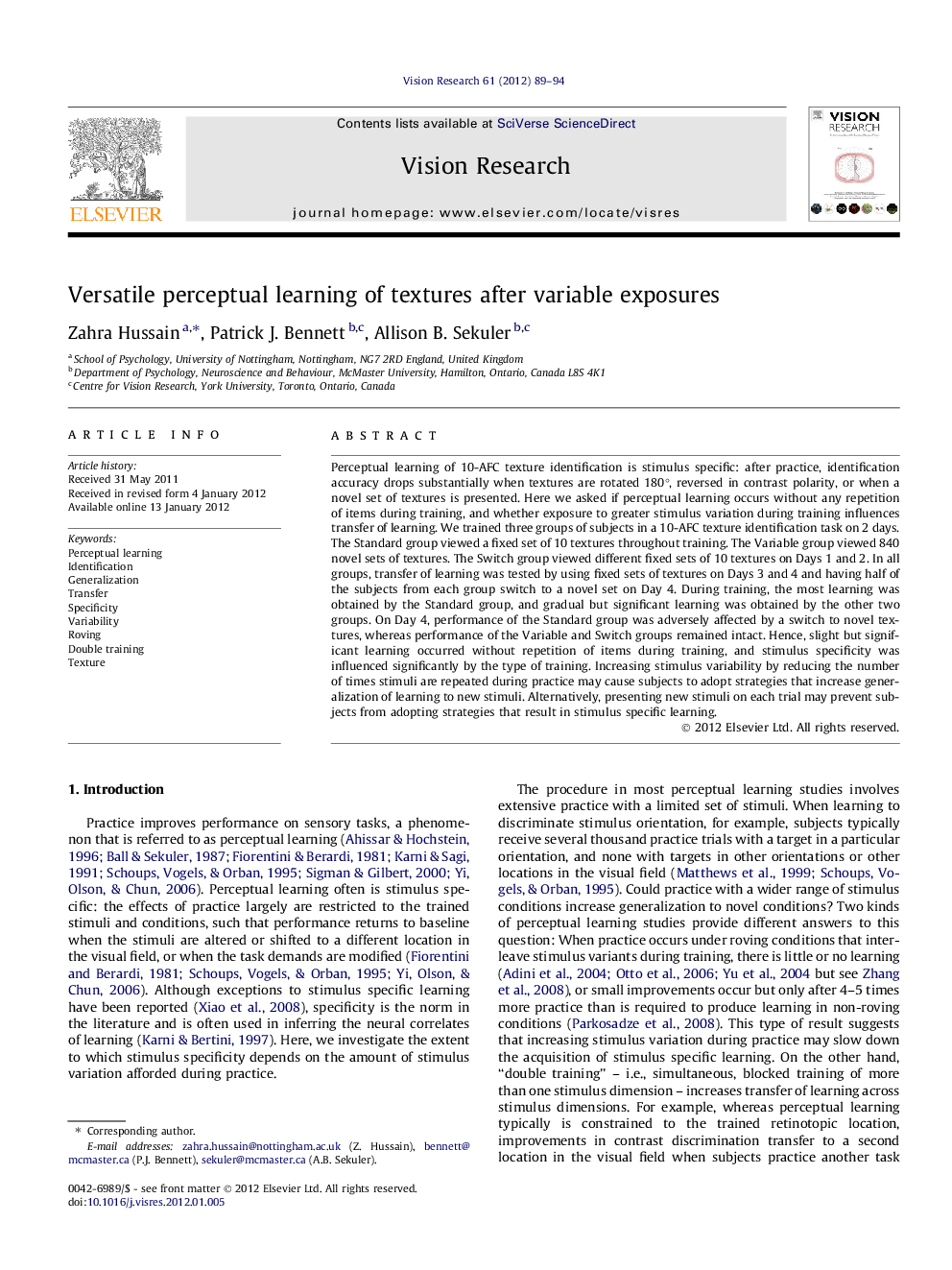| Article ID | Journal | Published Year | Pages | File Type |
|---|---|---|---|---|
| 4034012 | Vision Research | 2012 | 6 Pages |
Perceptual learning of 10-AFC texture identification is stimulus specific: after practice, identification accuracy drops substantially when textures are rotated 180°, reversed in contrast polarity, or when a novel set of textures is presented. Here we asked if perceptual learning occurs without any repetition of items during training, and whether exposure to greater stimulus variation during training influences transfer of learning. We trained three groups of subjects in a 10-AFC texture identification task on 2 days. The Standard group viewed a fixed set of 10 textures throughout training. The Variable group viewed 840 novel sets of textures. The Switch group viewed different fixed sets of 10 textures on Days 1 and 2. In all groups, transfer of learning was tested by using fixed sets of textures on Days 3 and 4 and having half of the subjects from each group switch to a novel set on Day 4. During training, the most learning was obtained by the Standard group, and gradual but significant learning was obtained by the other two groups. On Day 4, performance of the Standard group was adversely affected by a switch to novel textures, whereas performance of the Variable and Switch groups remained intact. Hence, slight but significant learning occurred without repetition of items during training, and stimulus specificity was influenced significantly by the type of training. Increasing stimulus variability by reducing the number of times stimuli are repeated during practice may cause subjects to adopt strategies that increase generalization of learning to new stimuli. Alternatively, presenting new stimuli on each trial may prevent subjects from adopting strategies that result in stimulus specific learning.
► We examined the effect of stimulus variability on the amount of perceptual learning and its transfer to novel stimuli. ► Gradual but significant perceptual learning can occur with high stimulus variability, where unique textures are used on every trial. ► High stimulus variability during practice facilitates subsequent transfer of learning to novel textures. ► Two instances of transfer between a small number of textures is equivalent to exposure to 840 unique textures.
